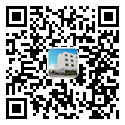Thermocouples and thermal resistors are contact temperature measuring devices in temperature measurement. Although they have the same function, their principles and characteristics are not the same, and the scope of use is also different.
Thermocouple: A temperature-measuring sensor, like a thermal resistor, is a temperature sensor, but the difference between it and the thermal resistance is mainly:
First, the nature of the signal, the thermal resistance itself is the resistance, the temperature changes, so that the resistance produces a positive or negative resistance change; and the thermocouple, is the change of the induced voltage, he changes with the temperature changes.
Second, the temperature range of the two sensors is different. The thermal resistance generally detects the temperature range of 0-150 degrees (of course, the negative temperature can be detected), and the thermocouple can detect the temperature range of 0-1000 degrees (or even higher). Therefore, the former is Low temperature detection, the latter is high temperature detection.
Third, from the material, the thermal resistance is a metal material, with a temperature-sensitive metal material, the thermocouple is a bimetallic material, two different metals, due to temperature changes, two in two different wires The potential difference is generated at the end.
Fourth, the PLC corresponds to the thermal resistance and thermocouple input module is also different, this sentence is no problem, but the general PLC directly access 4 ~ 20ma signal, and the thermal resistance and thermocouple generally have a transmitter Only access to the PLC. If you are connected to the DCS, you don't have to use the transmitter! The thermal resistance is the RTD signal, and the thermoelectricity is the TC signal!
5. PLC also has a thermal resistance module and a thermocouple module, which can directly input resistance and galvanic signals.
Sixth, thermocouples have J, T, N, K, S and other models, which are more expensive than the resistors, but also cheaper than the resistors, but the compensation wires are counted, and the comprehensive cost thermocouples are high. The thermal resistance is a resistance signal and the thermocouple is a voltage signal.
7. The principle of thermal resistance temperature measurement is based on the nature of the resistance of the conductor (or semiconductor) as a function of temperature. The measurement range is negative 00~500 degrees. Commonly used are platinum resistance (Pt100, Pt10) and copper resistance Cu50 (negative). 50-150 degrees).
The thermocouple temperature measurement principle is based on the thermoelectric effect to measure the temperature. Commonly used are platinum rhodium - platinum (index S, measuring range 0 ~ 1300 degrees), nickel chromium - nickel silicon (index K, measuring range 0~900 degrees), nickel-chromium-constantan (index E, measuring range 0~600 degrees), platinum-iridium 30-platinum 銠6 (index B, measuring range 0~1600 degrees)
(zz3) Thermocouple is a common temperature detection sensor. The principle of sensing temperature is that the temperature changes at different ends. The thermal resistance can also be called a thermal sensor, but it is a resistance change with temperature. A change has occurred. It's that simple.
On-the-spot judgment at work
1. Wiring different thermocouples and thermal resistance measurement principle is different, so when connecting the secondary meter, it should be connected according to the requirements of the instrument. The thermocouple is two wires, with positive and negative points; the thermal resistance has the difference of two wires, three wires and four wires. The main measuring components are two wires. For different connected instruments, there are different compensation wires, so according to different instruments Wiring is required. First ensure the connection, the configuration is correct. In operation. Common short circuits, open circuits, poor contact (multiple gauges can be judged) and deterioration (identified by surface color). When inspecting, separate the thermocouple from the secondary meter, short the compensation line on the secondary meter with a tool, the table indicates the room temperature and then short the thermocouple terminal block, the table indicates the ambient temperature of the thermocouple (not, the compensation line has Fault), and then use the multimeter mv file to roughly estimate the thermoelectric potential of the thermocouple (if normal, please check the process).
2. The short circuit of the thermal resistance and the open circuit can be judged by the multimeter. In the operation, the short circuit is suspected. Just remove the wire end and look at the display instrument. If it is the maximum, the thermal resistance is short-circuited to zero, and the wire is short-circuited to ensure normal connection and configuration. The table value shows low or unstable, the protection tube is likely to enter the water to show the maximum, and the thermal resistance circuit breaker shows the minimum short circuit.

 中文版
中文版
